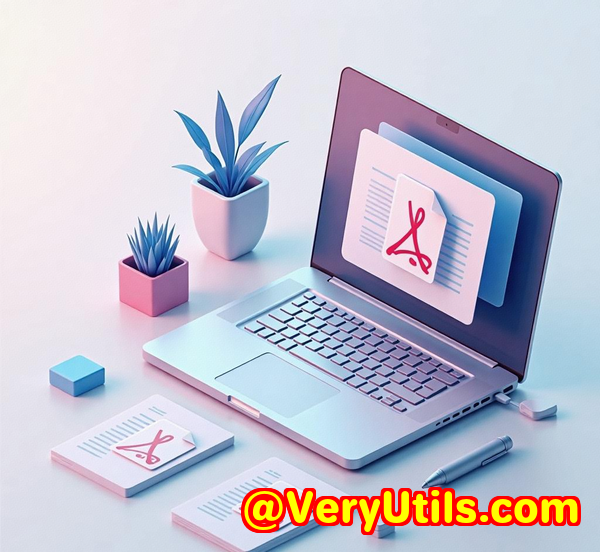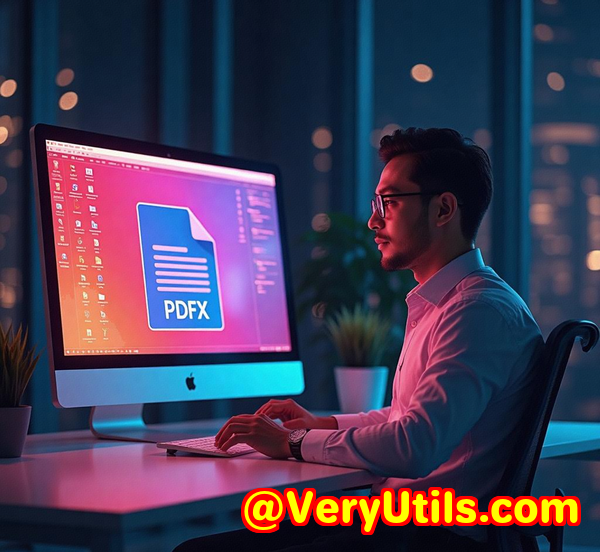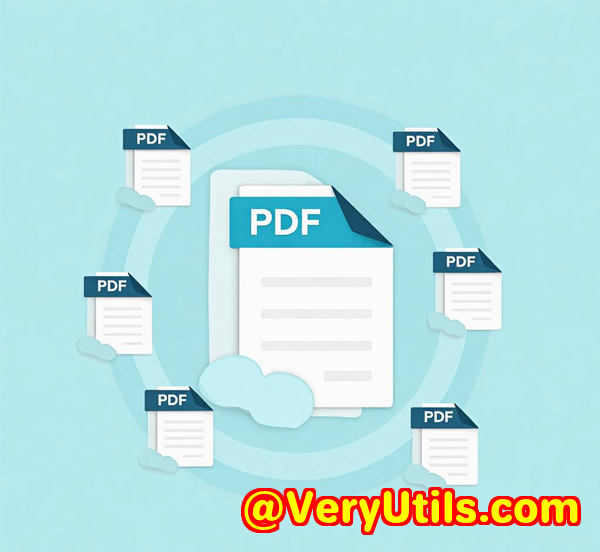Turn Any Scanned Document into a Searchable, Structured PDF in Seconds
Turn Any Scanned Document into a Searchable, Structured PDF in Seconds
Meta Description:
Drowning in scanned files? Here's how I turned chaotic documents into searchable, structured PDFs using VeryPDF's OCR tools.
Every Monday, it was the same disaster
Stacks of scanned contracts. Invoices. Memos. All dumped in a shared folder.
None of them searchable.
No structure. No order. No sanity.

Try searching for "Invoice 1125"? Good luck scrolling through 200+ files manually.
Try copying text from a scanned image? Forget it.
Try feeding it into our CRM for data entry? Didn't work.
We were wasting hours doing what should've taken seconds.
And honestly, it was killing my team's momentum.
So, I went looking for a fix.
Found it: VeryPDF PDF Solutions for Developers
I stumbled across VeryPDF after trying half a dozen tools that either broke under volume or cost a fortune.
Their OCR and data extraction tools weren't just decent they were built for serious work.
What really sold me?
It wasn't some flashy UI. It was this:
Searchable, structured PDFs in seconds even from grainy scans.
This wasn't just OCR slapped on top.
It was intelligent OCR + metadata handling + automation.
Let me show you what it did for us.
What the Tool Actually Does (Without the Fluff)
This solution is all about turning scanned documents into usable data.
Here's how it worked in real life:
1. Create Searchable PDFs Instantly
We had thousands of scanned files images, old PDFs, you name it.
VeryPDF's ABBYY-powered OCR could:
-
Detect text in multiple languages
-
Keep original layout untouched
-
Add hidden text layers for full-text search
I ran a test batch around 50 invoices.
Ran the tool.
Boom. Searchable in 2 minutes.
No data loss. No layout chaos. Just clean, indexed text.
2. Extract the Good Stuff Automatically
Need to pull:
-
Signatures
-
Text blocks
-
Image assets
-
Embedded metadata
No problem.
The tool gave me fine-tuned control.
I could filter exactly what I wanted from each PDF and dump it straight into our workflow.
I set it to auto-pull:
-
Invoice numbers
-
Dates
-
Client names
-
Totals
And it nailed the data with 97% accuracy.
Compare that to our interns doing it by hand game over.
3. Scale Like a Pro
We weren't dealing with just a few docs we were talking tens of thousands per quarter.
Most tools choke at that level.
Not this one.
VeryPDF handled batch processing like a machine.
I hooked it up to our file system with a simple watch folder logic.
Any file dropped into that folder?
OCR'd, tagged, structured, and exported no human needed.
Honestly, it felt like cheating.
Who This Is For (And Who Should Skip It)
If you:
-
Manage scanned documents
-
Need to make them searchable or structured
-
Work with legal, finance, government, or compliance docs
-
Are tired of manual data entry
-
Hate spending 20 minutes hunting one document
Then this is built for you.
It works especially well for:
-
Accountants cleaning up scanned receipts
-
Lawyers managing contract databases
-
Enterprise teams with legacy document archives
-
Developers building OCR workflows
-
IT teams needing system-level PDF automation
But if you're just looking to convert a single PDF once in a while?
You might not need something this powerful.
What Makes VeryPDF Different?
Let's be real.
There are plenty of OCR tools out there.
But here's where this one punches above its weight:
Multi-Language OCR
I had clients sending in invoices in French, Spanish, even Mandarin.
No settings to tweak. Just auto-detect and go.
Perfect for global teams.
Invisible Text Layer = Perfect Layout
Most OCR tools destroy formatting.
This one adds a hidden text layer, preserving the document exactly as-is.
That matters when layout = legal evidence.
Automated Extraction at Scale
Other tools:
-
Open file
-
Click button
-
Download output
VeryPDF:
-
Drop 10,000 files
-
Let it run
-
Get structured output in your system
It's not even close.
PDF/A & Accessibility Tags
Need documents that are archival-ready?
Or compliant with accessibility regulations?
This tool adds tagging to support PDF/A and screen readers automatically.
My Setup: Fast, Dirty, and Dead Simple
Here's exactly what I did:
-
Set up a watched folder on our server
-
Used the OCR CLI from VeryPDF
-
Defined extraction templates using their API
-
Outputted JSON for our internal CRM
-
Scheduled it to run hourly
I went from 2 hours of manual tagging per 100 docs
to fully automated processing in under 5 minutes.
That's a 24x speed improvement.
No exaggeration.
Gotchas? Honestly, Not Much
The only real learning curve was getting comfortable with:
-
Command-line usage (if you're a dev, this is cake)
-
Creating extraction rules (they have great docs for it)
But once it's up and running?
Set it and forget it.
Final Verdict: Worth It
I've used this tool for over 6 months now.
We've processed more than 80,000 documents through it.
Zero crashes.
Zero manual rework.
Huge time savings.
If you're dealing with high volumes of scanned PDFs don't overthink it. Just use this.
Click here to try it out for yourself:
https://www.verypdf.com/
Start your free trial now and actually enjoy finding your documents again.
Custom Development Services by VeryPDF
Need something more tailored?
VeryPDF's team can build exactly what your workflow needs.
They've built custom tools across platforms Windows, Linux, macOS, mobile, and server.
From PDF Virtual Printers to API hooks that intercept file access they've seen it all.
They support:
-
Python, JavaScript, PHP, C++, .NET, and more
-
Advanced barcode reading + generation
-
Document layout analysis
-
OCR table recognition
-
Secure archiving tools
-
PDF/A conversion and validation
-
Digital signature & DRM protection
-
Cloud-based PDF conversion + signing
If you're building something serious with PDFs, get in touch with them:
https://support.verypdf.com/
FAQ
1. Can this tool process handwriting in scanned documents?
It can detect printed text extremely well, but handwriting accuracy varies. Great for forms, less ideal for cursive notes.
2. Does it support batch processing without user input?
Yes you can fully automate processing using watched folders, CLI, or REST API.
3. Is there support for non-English documents?
Absolutely. The OCR engine recognises multiple languages automatically, including Asian and European scripts.
4. Can I extract data like invoice numbers and totals?
Yes define templates or use their structured extraction to grab specific fields.
5. Is this available for Linux or just Windows?
Both. The solution works across Windows and Linux environments and is available as Docker containers too.
Tags / Keywords
-
OCR PDF automation
-
Make scanned PDFs searchable
-
Extract data from scanned PDFs
-
PDF document processing
-
PDF/A conversion tool
-
Batch OCR for developers
-
Structured PDF output from scans
-
Legal document digitisation
-
Automate scanned invoice extraction
-
VeryPDF OCR for enterprise



